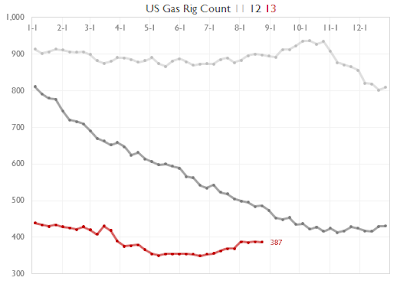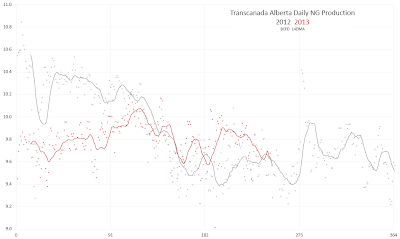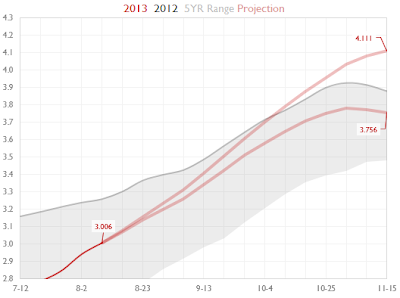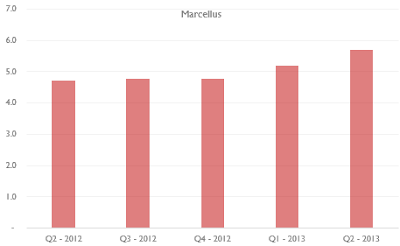The rig counts fell from over 150 to 32, now at 42:
The play is split between Louisiana and Texas. Louisiana has the larger piece, and better public data. So looking at production in the major haynesville producing parishes (counties) over the last few years we see this:
It must be noted that the above includes perhaps 1 BCFD of legacy production, so the net production from the shale itself in May was probably only around 4 BCFD, a decline of 2.2 BCFD in 18 months.
The play was so young that most wells were in the steepest segment of the decline curve. The Barnett Shale experienced a similar decline in rigs, but production didn't decline there (meaningfully) because the average well age was much much older.
I find several aspects of the Haynesville situation important:
- The production declines must be nearly over. Not only are wells aging, and production much lower, but the current rig count and average drill time suggests that it will only take about 25 rigs to maintain production around 4 BCFD from the shale.
- The steep production decline has masked growth in other shales thusfar, but will not going forward.
- This is the cleanest example of drilling behavior in dry gas plays, with so many conflicting opinions about what 'break even' gas prices are in various basins. I think it shows that there are some economic opportunities in the 'core of the core' even below $4 gas. Now that gas seems to be hitting the skids again, rigs are unlikely to be added.
- The HVS is probably best positioned for the coming LNG boom, and we might expect to see more JV deals and production lockups for the gulf coast LNG terminals very soon, with Cheniere projecting a late 2015 start date for exports. We might see more drilling activity sooner, if the forward price curve begins to rise in '15 and beyond.






















